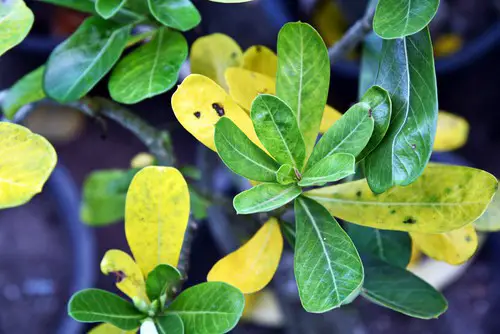Adenium plants, also known as desert roses, are popular for their striking appearance and colorful flowers. However, if you notice that the leaves of your Adenium plant are turning yellow, it can be a cause for concern. Yellow leaves can be an indication of a problem with the plant, and if left untreated, it can lead to the death of the plant.
Understanding Adenium plants is essential to identify the cause of yellowing leaves. Adeniums are succulent plants that require little water and prefer well-draining soil. They are native to arid regions, and their leaves and stems have adapted to store water.
However, overwatering and poor drainage can lead to root rot, which can cause yellowing leaves. Additionally, pests and diseases can also cause yellowing leaves in Adenium plants.
Identifying the symptoms of adenium leaves turning yellow is crucial to determine the cause of the problem. Yellowing leaves can start from the tips and spread inwards, or they can turn completely yellow and fall off. The pattern of yellowing can help identify the cause of the problem, whether it is due to overwatering, pests, or diseases.
Key Takeaways
- Adenium plants are succulent plants that require little water and prefer well-draining soil.
- Yellowing leaves can be an indication of a problem with the plant, such as overwatering, pests, or diseases.
- Identifying the symptoms of yellowing leaves and taking preventive measures can help keep Adenium plants healthy.
You also don’t want to miss these other related picks:
Understanding Adenium Plant
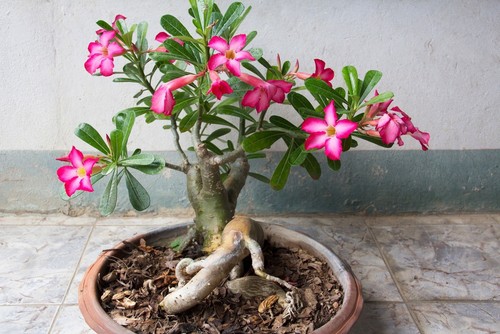
Adenium plants, also known as Desert Roses, are popular for their beautiful and colorful flowers. These plants are native to Africa and the Arabian Peninsula and are well-known for their unique caudex shape. They are succulent plants that store water in their stems and leaves, allowing them to survive in arid environments.
Adenium plants are easy to grow and maintain, making them a popular choice for gardeners and plant enthusiasts. They require well-draining soil and plenty of sunlight to thrive. However, despite their hardy nature, they can be susceptible to various pests and diseases that can cause their leaves to turn yellow.
Yellow leaves on Adenium plants can be a sign of various issues, including overwatering, nutrient deficiencies, and pest infestations. It is essential to identify the underlying cause of yellowing leaves and take appropriate measures to prevent further damage to the plant.
In addition to their stunning flowers, Adenium plants have attractive oval-shaped leaves that are light green in color. These leaves can turn yellow due to various reasons, including environmental stress, root-bound conditions, and poor soil quality.
By understanding the causes of yellowing leaves, gardeners can take appropriate steps to maintain the health and beauty of their Adenium plants.
Adenium Leaves Turning Yellow
Adenium or desert rose plants are known for their beautiful flowers and unique trunk shape. However, yellowing leaves can be a common issue for these plants. There are several reasons why adenium leaves may turn yellow, including overwatering, underwatering, nutrient deficiency, pests and diseases, and environmental stress.
1. Overwatering
Overwatering is one of the most common causes of yellowing leaves in adenium plants. When the soil is constantly wet, it can lead to root rot and other fungal infections. This can cause the leaves to turn yellow and eventually fall off.
To avoid overwatering, it is important to allow the soil to dry out between waterings. It is also a good idea to use a well-draining soil mix.
2. Underwatering
On the other hand, if the adenium plant is not watered enough, the leaves may also turn yellow. When a plant is underwatered, it can become stressed and its leaves may wilt and turn yellow. To avoid underwatering, it is important to water the plant when the top inch of soil is dry to the touch.
3. Nutrient Deficiency
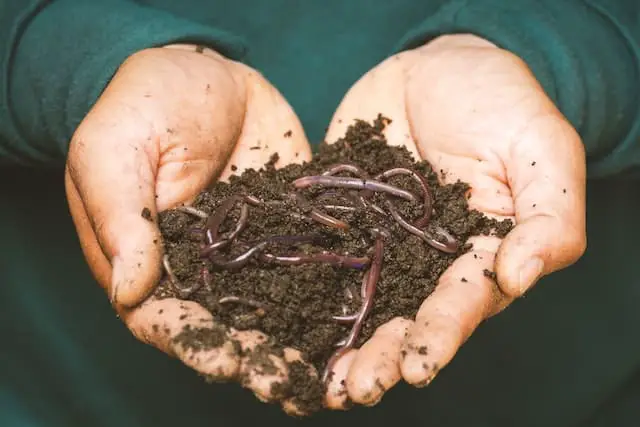
Adenium plants require certain nutrients to grow and thrive. If the plant is not getting enough nutrients, it can lead to yellowing leaves. Common nutrient deficiencies include nitrogen, phosphorus, and potassium. To avoid nutrient deficiencies, it is important to fertilize the plant regularly with a balanced fertilizer.
4. Pests and Diseases
Pests and diseases can also cause yellowing leaves in adenium plants. Common pests include spider mites, mealybugs, and scale insects. These pests can suck the sap from the plant, causing it to become stressed and its leaves to turn yellow.
Diseases such as root rot and fungal infections can also cause yellowing leaves. To avoid pests and diseases, it is important to keep the plant clean and healthy.
5. Environmental Stress
Environmental stress can also cause yellowing leaves in adenium plants. This can include changes in temperature, humidity, and light. Adenium plants prefer warm temperatures and bright, indirect light.
If the plant is exposed to extreme temperatures or too much direct sunlight, it can become stressed and its leaves may turn yellow. To avoid environmental stress, it is important to keep the plant in a stable environment with consistent temperatures and light levels.
Identifying Symptoms of Yellowing Leaves
Adenium plants, commonly known as desert roses, are popular for their beautiful flowers and unique appearance. However, yellowing leaves can be a common problem for these plants. Identifying the symptoms of yellowing leaves is crucial for addressing the problem and saving the plant.
1. Yellowing Leaves
The most obvious symptom of yellowing leaves is, of course, yellow leaves. The leaves may turn yellow gradually or suddenly, and the yellowing can occur on one or more leaves. In some cases, the yellowing may start from the tips or edges of the leaves and gradually spread to the entire leaf.
2. Leaf Drop
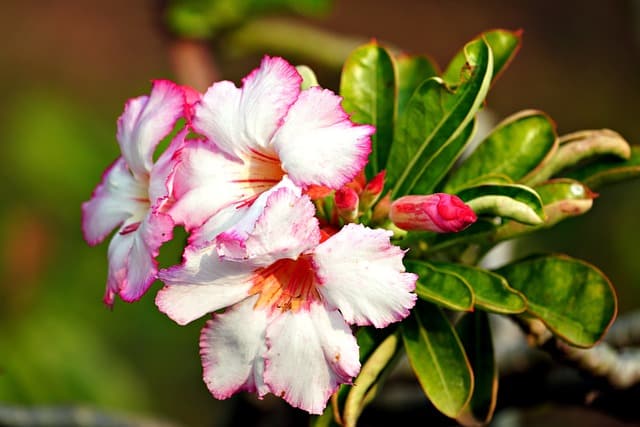
Another symptom of yellowing leaves is leaf drop. The leaves may start to fall off the plant, either gradually or suddenly. This can be a sign of a severe problem, and immediate action is required to save the plant.
3. Other Symptoms
Yellowing leaves may also be accompanied by other symptoms, such as brown spots, wilting, and curling. These symptoms can indicate a variety of problems, including pests, diseases, and environmental stress.
4. Possible Causes
There are several possible causes of yellowing leaves in Adenium plants. These include:
- Overwatering
- Underwatering
- Nutrient deficiencies
- Pests and diseases
- Environmental stress
Identifying the cause of yellowing leaves is essential for addressing the problem and saving the plant. In some cases, it may be necessary to consult a professional for help.
Preventive Measures
To prevent yellowing of Adenium leaves, it is important to take care of the plant and ensure that it is healthy. Here are some preventive measures that can be taken:
1. Proper Soil Mix
Adenium plants require a well-draining soil mix. The soil should be a mixture of sand, perlite, and peat moss. It is important to avoid compact soil that can lead to water blockage and root bounding. A compact soil mix can cause a stress condition on the plant, which can result in yellowing leaves.
2. Watering
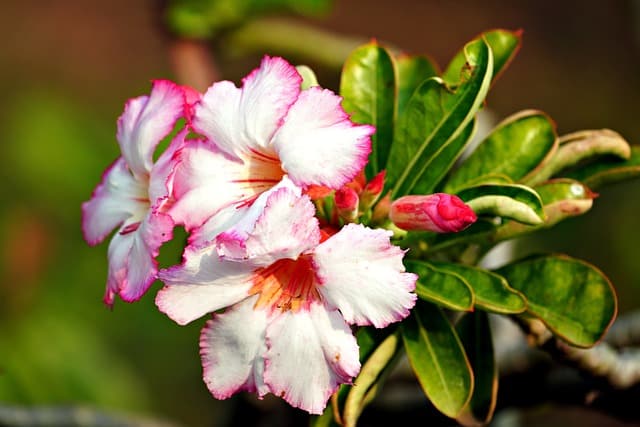
Adenium plants should be watered when the soil is completely dry. Overwatering can lead to root rot, which can cause yellowing of the leaves. It is important to avoid waterlogging and ensure that the pot has proper drainage.
3. Fertilization
Adenium plants require regular fertilization to ensure healthy growth. A balanced fertilizer with a 1:1:1 ratio of nitrogen, phosphorus, and potassium should be used. Over-fertilization can lead to salt buildup in the soil, which can cause yellowing of the leaves.
4. Sunlight
Adenium plants require full sunlight to ensure healthy growth. The plant should be placed in a location that receives at least 6 hours of direct sunlight per day. Insufficient sunlight can cause yellowing of the leaves.
5. Pest Control
Adenium plants are susceptible to pest infestations such as spider mites and mealybugs. It is important to regularly check the plant for any signs of infestation and take appropriate measures to control the pests. Insecticidal soap can be used to control pests on the plant.
By following these preventive measures, Adenium plants can be kept healthy and free from yellowing leaves.
Treatment for Yellowing Leaves
Yellowing leaves are a common problem for Adenium plants, but fortunately, they can be treated. The following sub-sections detail the different treatments for yellowing leaves.
1. Adjusting Watering Practices
One of the most common causes of yellowing leaves is overwatering or underwatering. Adenium plants require well-draining soil and should be watered thoroughly but allowed to dry out between waterings.
If the soil is too wet, the roots can become waterlogged, leading to yellowing leaves. If the soil is too dry, the plant can become dehydrated, leading to yellowing leaves. A good rule of thumb is to water the plant when the top inch of soil is dry to the touch.
2. Balancing Nutrients
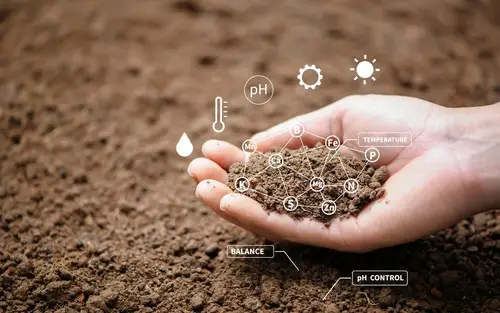
Adenium plants require a balanced diet of nutrients to grow healthy leaves. If the plant is lacking in certain nutrients, the leaves may turn yellow. Nitrogen, phosphorus, and potassium are essential macronutrients that the plant needs.
A balanced fertilizer that contains these nutrients can help correct nutrient deficiencies. Additionally, micronutrients such as iron, magnesium, and calcium are also important for plant health.
3. Pest and Disease Control
Yellowing leaves can also be a sign of pest infestations or diseases. Common pests that affect Adenium plants include spider mites, mealybugs, and scale insects. These pests can be controlled with insecticidal soap or neem oil.
Diseases such as root rot and leaf spot can also cause yellowing leaves. These diseases can be prevented by ensuring the plant has good drainage and proper air circulation.
4. Modifying Environment
Adenium plants prefer warm temperatures and bright, indirect light. If the plant is in a location that is too cold or too dark, the leaves may turn yellow. Moving the plant to a warmer, brighter location can help correct this issue.
Additionally, Adenium plants are sensitive to changes in temperature and humidity. Sudden changes can cause stress and lead to yellowing leaves. Keeping the plant in a consistent environment can help prevent this issue.
In conclusion, yellowing leaves in Adenium plants can be treated by adjusting watering practices, balancing nutrients, controlling pests and diseases, and modifying the environment. By following these treatments, the plant can recover and grow healthy leaves.
Conclusion
Yellowing of adenium leaves can be a cause for concern for plant owners. In this article, we have discussed some of the most common reasons why adenium leaves turn yellow and provided some solutions to help prevent it from happening.
Overwatering is one of the most common reasons for yellowing of adenium leaves. It is important to ensure that the soil is well-drained and that the plant is not watered too frequently. Additionally, using a soil mix that is too compact can also cause yellowing of the leaves.
Another common reason for yellowing of adenium leaves is a lack of sunlight. These plants require plenty of sunlight to thrive, and a lack of it can cause the leaves to turn yellow. Nutritional deficiencies can also cause yellowing of the leaves, so it is important to ensure that the plant is receiving the necessary nutrients.
In some cases, yellowing of adenium leaves can be a sign of pests or diseases. Keeping a close eye on the plant and addressing any issues promptly can help prevent the problem from getting worse.
Overall, yellowing of adenium leaves can be a sign of a variety of issues. By understanding the common reasons for yellowing and taking steps to prevent it from happening, plant owners can help ensure that their adenium plants remain healthy and vibrant.
Frequently Asked Questions
How to prevent yellowing of Adenium leaves?
Preventing yellowing of Adenium leaves can be achieved by following some simple steps. First, make sure to provide your plant with adequate sunlight. Adenium plants need at least 6-8 hours of direct sunlight per day.
Second, ensure that the soil is well-draining and does not hold excess moisture. Overwatering can cause the roots to rot and yellow the leaves. Third, avoid using fertilizers that are high in nitrogen, as this can lead to yellowing of the leaves.
What causes Adenium leaves to turn yellow?
There are several reasons why Adenium leaves may turn yellow. One of the most common reasons is overwatering, which can lead to root rot and yellowing of the leaves. Other causes include nutrient deficiencies, pests, diseases, and extreme temperatures.
What are the best practices for watering Adenium plants?
The best practice for watering Adenium plants is to wait until the soil is dry before watering again. Adenium plants prefer to be slightly dry than too wet. When watering, make sure to water the soil and not the leaves. Overhead watering can lead to fungal diseases. Additionally, avoid using cold water, as this can shock the plant.
How can I treat yellowing leaves on my Adenium plant?
Treating yellowing leaves on Adenium plants depends on the cause. If the cause is overwatering, then reducing the frequency of watering and allowing the soil to dry out can help. If the cause is nutrient deficiency, then using a balanced fertilizer can help. If the cause is pests or diseases, then using appropriate treatments can help.
What is the ideal temperature range for Adenium plants?
Adenium plants prefer warm temperatures between 65-80°F (18-27°C). They can tolerate temperatures up to 100°F (38°C) but may suffer if exposed to temperatures below 50°F (10°C).
What are the common pests and diseases that affect Adenium plants?
Common pests that affect Adenium plants include spider mites, mealybugs, and scale insects. Diseases that affect Adenium plants include fungal diseases such as leaf spot and root rot. Preventing these pests and diseases can be achieved by maintaining good plant hygiene and avoiding overwatering.

Hey, I’m Lisa and I’ve been an avid gardener for over 30 years. I love writing, talking and living in the garden! Feel free to connect with me on my socials below

